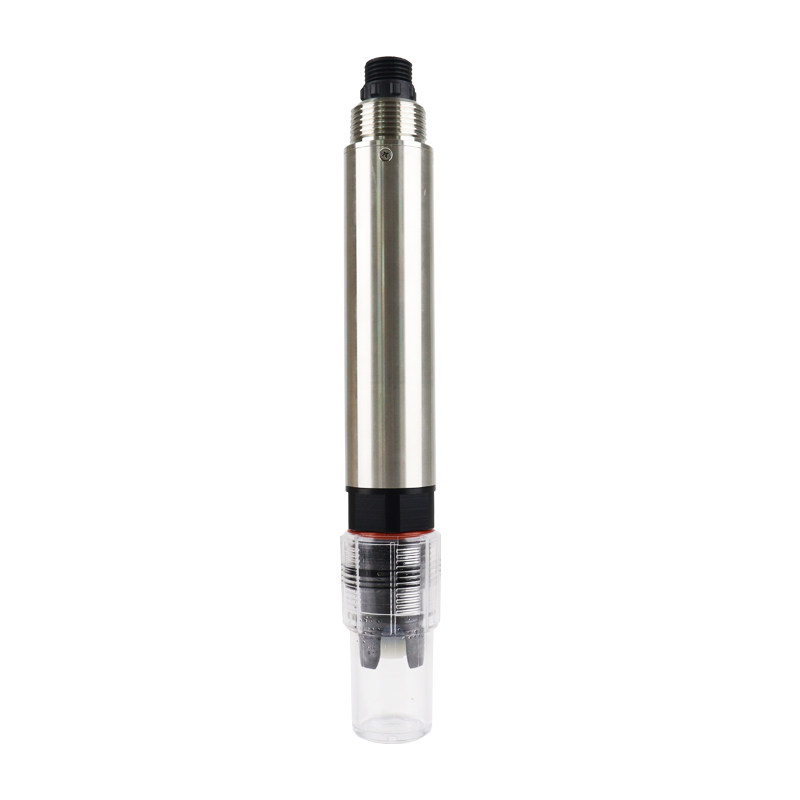
Water Hardness Meter
Model:FT-S2
Brand:fengtu
1. Water Hardness Meter Product Introduction
Water Hardness Meter is suitable for testing the water hardness concentration of large, medium and small water plants, industrial and mining enterprises, domestic or industrial water.The S2Water Hardness Meter is made of calcium and magnesium selective electrodes based on PVC film.It is used to test the total hardness in water (measured as CaCO3).It is equipped with temperature compensation to ensure that the test is fast, simple, accurate and economical.This user manual details the technical parameters, use, maintenance and communication protocols of the total hardness sensor.
Signal output: RS-485 bus, ModbusRTU protocol, conveniently connected to third-party equipment such as PLC, DCS, industrial control computer, general controller, paperless recording instrument or touch screen.
Patented calcium magnesium ion electrode, the internal reference liquid seeps out from the microporous salt bridge extremely slowly under a pressure of at least 100KPa (1Bar).Such a reference system is very stable and has a longer electrode life than ordinary industrial electrodes.
Easy to install: 3/4NPT pipe thread, easy to sink in or install in pipes and tanks.
IP68 protection grade.
2.Water Hardness Meter technical parameters
| Range and resolution | 0~1000.0mg/L; 0.1 |
| Accuracy | ±10% of reading; ±0.3℃ |
| Response time (T90) | <60s |
| lowest detection limit | 0.9 (0-1000mg/L) |
| Calibration method | Two point calibration |
| Cleaning method | / |
| temperature compensation | Automatic temperature compensation (Pt1000) |
| Output mode | RS-485(ModbusRTU), 4-20 mA (optional) |
| Storage temperature | -5~40℃ |
| working conditions | 0~40℃, ≤0.2MPa, pH: 4~10 |
| Shell material | 316L |
| Installation method | Submersible installation, 3/4 NPT |
| Power consumption | 0.2W@12V |
| powered by | 12~24VDC |
| Protection level | IP68 |
3.Water Hardness Meter maintenance and upkeep
1.Use and maintenance
Before testing, the electrode should be energized and soaked in tap water for 48 hours.After activation is completed, it should be cleaned in deionized water.If the electrode is not used for a long period of time (more than two weeks), it must be stored dry, and the sensing element of the electrode should be placed in a protective cap.
Check whether the terminal block is dry.If there is any stain, please wipe it with absolute alcohol and blow dry before use.Long-term immersion in distilled water or protein solutions should be avoided, and contact with silicone grease should be avoided.If the electrode has been used for a long time, its PVC membrane may become translucent or have sediments attached.In this case, it can be rinsed with distilled water (or deionized water).When the electrode is used for a long time and measurement errors occur, correction must be performed.
If the electrode still cannot be calibrated and measured after maintaining it in the above manner, it means that the electrode has failed.Please replace the electrode.
2.Calibration of sensors
Note: The sensor has been calibrated before leaving the factory.It should not be calibrated at will unless the measurement error is exceeded.
a) Zero point calibration
Put the sensor into the zero point standard solution and wait for 10 minutes.After the value is stable, check whether the displayed value is within the error range.If not, zero point calibration is required.Refer to the appendix for calibration instructions.
b) Slope calibration
Put the sensor into the slope standard solution and wait for 10 minutes.After the value is stable, check whether the displayed value is within the error range.If not, slope calibration is required.Refer to the appendix for calibration instructions.
Article address:https://www.sqqx.net/en/Water-quality-sensor/Water-Hardness-Meter.html

 +86 15898932201
+86 15898932201 Get a Free Quote
Get a Free Quote



